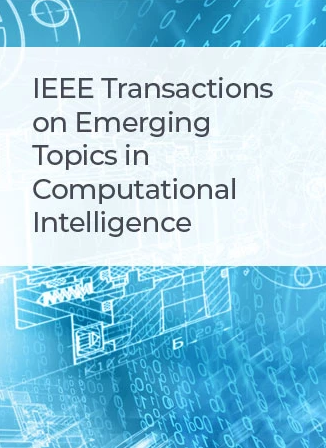Sparse Graph Tensor Learning for Multi-View Spectral Clustering
IF 5.3
3区 计算机科学
Q1 COMPUTER SCIENCE, ARTIFICIAL INTELLIGENCE
IEEE Transactions on Emerging Topics in Computational Intelligence
Pub Date : 2024-06-12
DOI:10.1109/TETCI.2024.3409724
引用次数: 0
Abstract
Multi-view spectral clustering has achieved impressive performance by learning multiple robust and meaningful similarity graphs for clustering. Generally, the existing literatures often construct multiple similarity graphs by certain similarity measure (e.g. the Euclidean distance), which lack the desired ability to learn sparse and reliable connections that carry critical information in graph learning while preserving the low-rank structure. Regarding the challenges, a novel Sparse Graph Tensor Learning for Multi-view Spectral Clustering (SGTL) method is designed in this paper, where multiple similarity graphs are seamlessly coupled with the cluster indicators and constrained with a low-rank graph tensor. Specifically, a novel graph learning paradigm is designed by establishing an explicit theoretical connection between the similarity matrices and the cluster indicator matrices, in order that the constructed similarity graphs enjoy the desired block diagonal and sparse property for learning a small portion of reliable links. Then, we stack multiple similarity matrices into a low-rank graph tensor to better preserve the low-rank structure of the reliable links in graph learning, where the key knowledge conveyed by singular values from different views is explicitly considered. Extensive experiments on several benchmark datasets demonstrate the superiority of SGTL.用于多视图光谱聚类的稀疏图张量学习
多视角光谱聚类通过学习多个稳健而有意义的相似性图进行聚类,取得了令人瞩目的性能。一般来说,现有文献通常通过某种相似性度量(如欧氏距离)来构建多个相似性图,而这种方法缺乏学习稀疏可靠连接的能力,而这些连接在图学习中承载着关键信息,同时又保留了低秩结构。针对这些挑战,本文设计了一种新颖的稀疏图张量学习多视角光谱聚类(SGTL)方法,在该方法中,多个相似性图与聚类指标无缝耦合,并受低秩图张量约束。具体来说,本文通过在相似性矩阵和聚类指标矩阵之间建立明确的理论联系,设计了一种新颖的图学习范式,从而使构建的相似性图在学习小部分可靠链接时具有所需的对角分块和稀疏特性。然后,我们将多个相似性矩阵堆叠成一个低秩图张量,以便在图学习中更好地保留可靠链接的低秩结构,其中明确考虑了来自不同视图的奇异值所传达的关键知识。在多个基准数据集上的广泛实验证明了 SGTL 的优越性。
本文章由计算机程序翻译,如有差异,请以英文原文为准。
求助全文
约1分钟内获得全文
求助全文
来源期刊

IEEE Transactions on Emerging Topics in Computational Intelligence
Mathematics-Control and Optimization
CiteScore
10.30
自引率
7.50%
发文量
147
期刊介绍:
The IEEE Transactions on Emerging Topics in Computational Intelligence (TETCI) publishes original articles on emerging aspects of computational intelligence, including theory, applications, and surveys.
TETCI is an electronics only publication. TETCI publishes six issues per year.
Authors are encouraged to submit manuscripts in any emerging topic in computational intelligence, especially nature-inspired computing topics not covered by other IEEE Computational Intelligence Society journals. A few such illustrative examples are glial cell networks, computational neuroscience, Brain Computer Interface, ambient intelligence, non-fuzzy computing with words, artificial life, cultural learning, artificial endocrine networks, social reasoning, artificial hormone networks, computational intelligence for the IoT and Smart-X technologies.
 求助内容:
求助内容: 应助结果提醒方式:
应助结果提醒方式:


